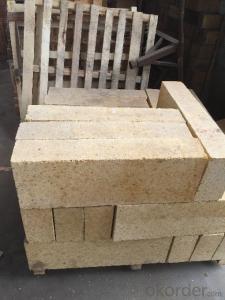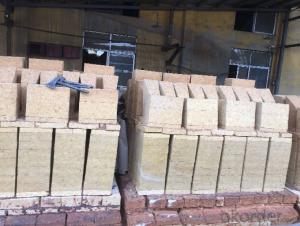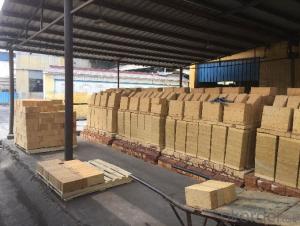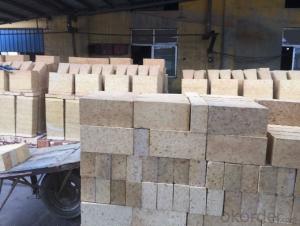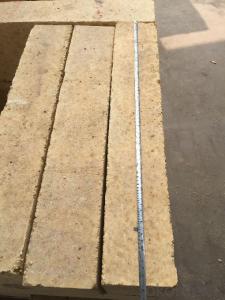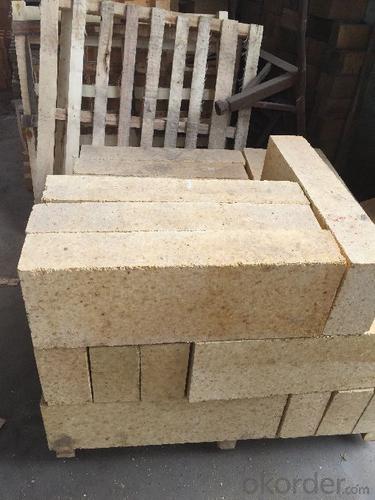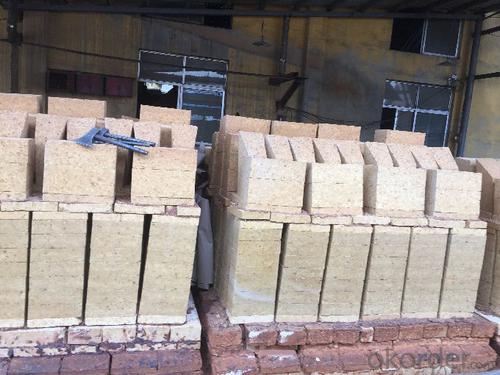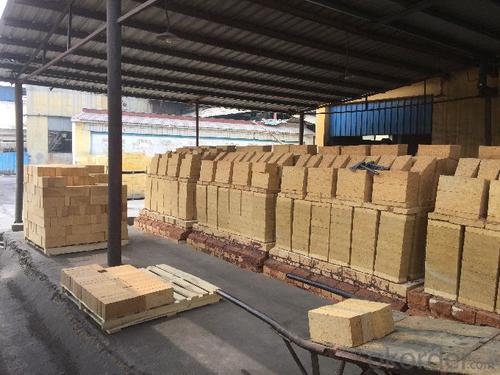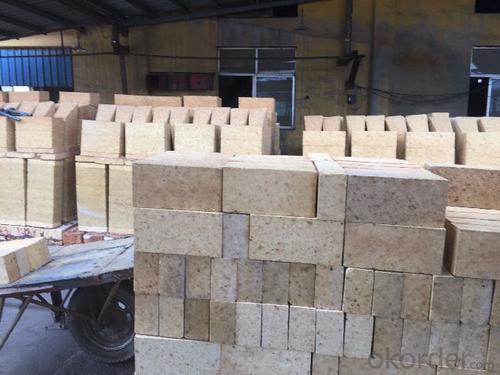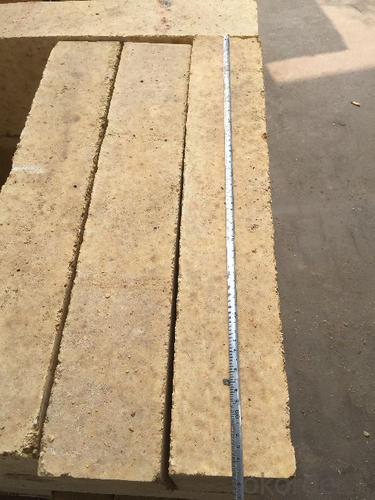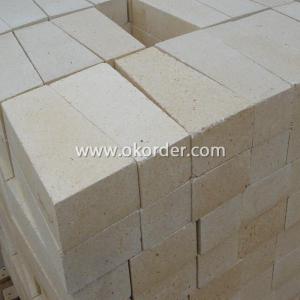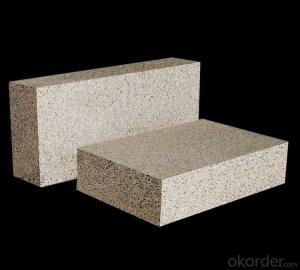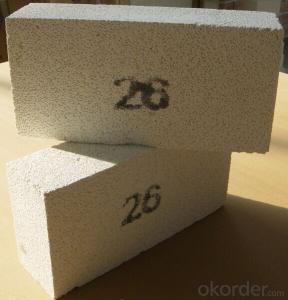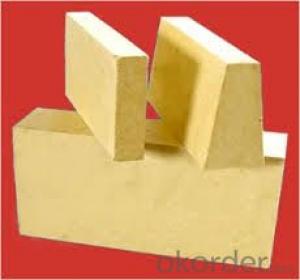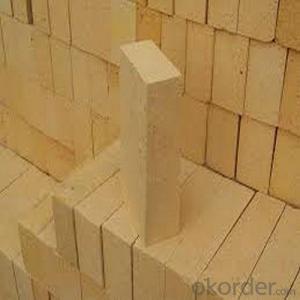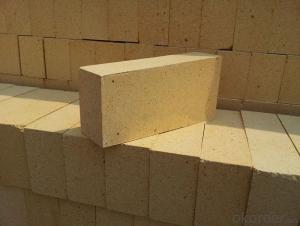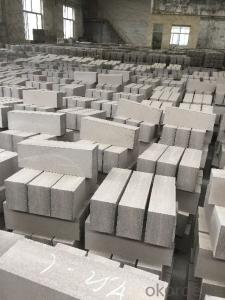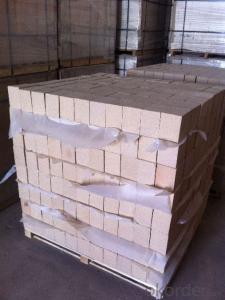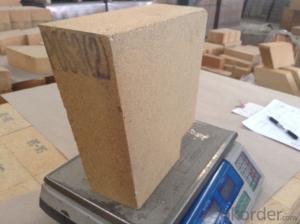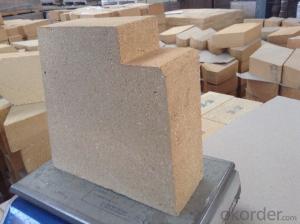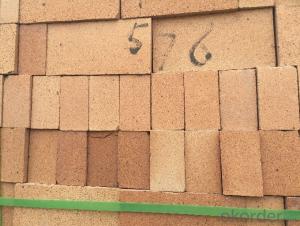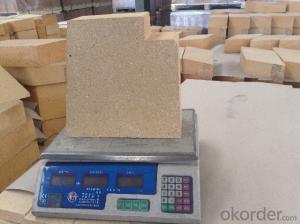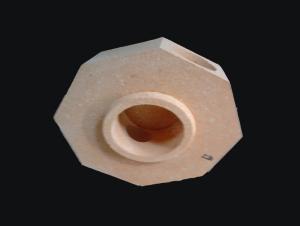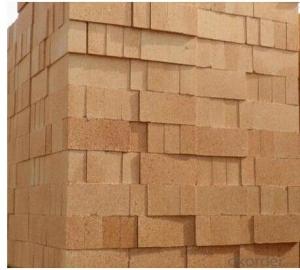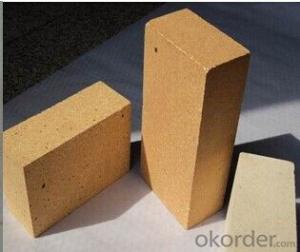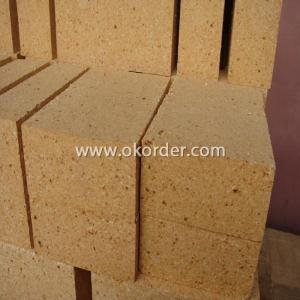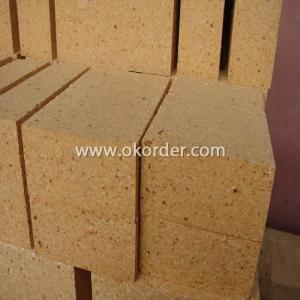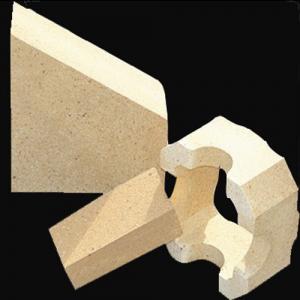Fireclay Brick with 45% Al2O3 Content - Refractory Grade
- Loading Port:
- Qingdao
- Payment Terms:
- TT OR LC
- Min Order Qty:
- 17 m.t
- Supply Capability:
- 10000 m.t/month
OKorder Service Pledge
OKorder Financial Service
You Might Also Like
General Information
CMAX high alumina firebricks are classified according to alumina content ranging from 48% to 90%.
High alumina ceramic refractory brick for blast furnace
Ceramic refractory brick description
Henan sansong porcelain co is specialized in high alumina high strength ceramic refractory brick, together with honeycomb ceramic heat exchanger, has been widely used to industrial furnaces or blast furnace with regenerative technology
They are available in various size and shapes
Our products enjoy a good reputation for their excellent quality and service in domestic and international markets.
Feature
Low thermal conductivity
Excellent acid and base slagging resistance
High refractoriness
Excellent thermal shock resistance
Excellent mechanical strength
High corrosion resistance
Good spilling resistance
High cold crushing strength
Excellent abrasion resistance at cold and hot conditions
High refractoriness
High mechanical strength
Application
CMAX high alumina bricks are commonly used in blast furnace, hot blast furnace, the roof of electric furnace, teeming ladle, rotary kiln, regenerator, etc
ITEM | UAL48 | UAL55 | UAL65 | UAL75 | UAL80 | UAL85 | ALP80 |
Refractoriness, ℃ | 1750 | 1770 | 1790 | 1790 | 1810 | 1810 | 1810 |
Apparent Porosity,% | 22 | 22 | 23 | 23 | 20 | 20 | 18 |
C.C.S, Mpa | 39 | 44 | 49 | 53 | 55 | 60 | 100 |
Refractories Under Load (0.2Mpa),℃ | 1420 | 1470 | 1500 | 1520 | 1500 | 1520 | 1550 |
Reheating Linear Change,% | 1450℃x2h 0.1~-0.4 | 1500℃x2h 0.1~-0.4 | 1500℃x2h 0.1~-0.4 | 1500℃x2h 0.1~-0.4 | 1550℃x2h -0.5~+0.5 | 1550℃x2h -0.5~+0.5 | 1550℃x2h -0.5~+0.5 |
Al2O3 Content , % | 48 | 55 | 65 | 75 | 80 | 85 | 82 |
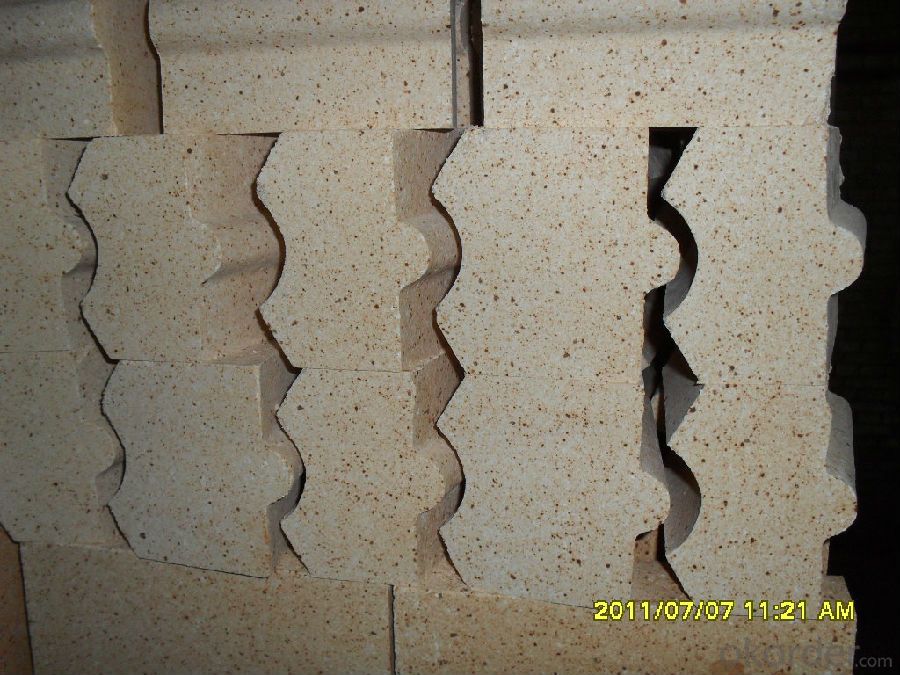
- Q: how to distinguish the quality of high alumina refractory brick when you buy it ?
- see the gap between the bricks and between kiln roof and kiln wall, etc.. 6, the pressure and the volume density of Pei brick and brick Pei size, appropreate matching of high alumina powder and high aluminous aggregate and other materials, the drying and time, and the mud trapped material humidity 1. 7, to reach the requirements of production. 4, the order of loading Pei brick into kiln . should prevent the lack of a scene , the requirement , mixing time, different procedure and the order of the adding of raw materials of high alumina brick. 3, drawing plan and lack of edge of high alumina brick . 5
- Q: what is consequence of high load and soft low of high alumina refractory brick ?
- softening, if not up to the design requirements, may cause vicious incident like the collapse of the stove in use. the full name is softening temperature under a fixed load, as the name suggests, it is the softening temperature after adding the load.
- Q: Refractory brick, high alumina brick, magnesia chrome brick, magnesia brick, clay brick, which type of brick has the highest refractory temperature?
- It depends. if high alumina brick is used in kiln, its temperature is above 1700 degree, clay brick is between 1500 degree to 1750 degree, magnesia bricks and magnesia-chrome bricks are about 1500 degree to 1650 degree.
- Q: How to classify light refractory bricks?
- It should be classified based on the production materials of refractory brick! In addition to ordinary light brick (cenosphere material), mullite poly light ball, there is lightweight high aluminum brick, lightweight clay brick, diatomite brick etc.!
- Q: What are 85 bricks, 95 bricks and standard bricks? What are the specifications?
- Chinese in the spring and Autumn period has created a square and brick, Qin and Han Dynasties brick technology and production scale, quality and variety have significant development, known as "Qin Zhuanhan tile".
- Q: How to do refractory bricks
- Use the friction press to press, have some volume density, porosity, water absorption rate.
- Q: What are the specifications of clay brick and cement brick construction?
- Chinese in the spring and Autumn period has created a square and brick, Qin and Han Dynasties brick technology and production scale, quality and variety have significant development, known as "Qin Zhuanhan tile".
- Q: what is application of high alumina refractory brick?
- reverberatory?furnace 1, close to the neutral refractory, but because mullite crystallization has not formed the network organization, so the load softening temperature is not higher than silica?brick. the refractoriness of high alumina brick is higher than fireclay?brick and semi-silica brick, mainly used in blast furnace, nozzle brick,etc. it is up to 1790 C~ 1750, can resistance to acid slag and alkaline slag erosion. hot blast furnace, blast furnace, high alumina brick are widely used for producing open-hearth?furnace regenerative bricks, because it contains SiO2, low impurity content, which belongs to high-grade refractory materials, electric furnace. 2, plug head used in pouring system . In addition. 3, because high aluminum products contains more Al2O3, forming less fusible vitreous body, so the high load softening temperature is higher than clay brick. because rotary kiln lining, slag resistance of high alumina refractory brick contain more Al2O3, so the ability of anti alkaline slag is weaker than anti acid slag. so it has a wide range of application. high alumina refractory brick due to the following performances
- Q: Are clay bricks radioactive?
- Radiation is almost invisible, radiation is almost everywhere.
- Q: How much refractory material is required for 1 million tons of coke oven
- This depends on the number of specific cubic, different factory designs different boiler, we need volume to caculate.
Send your message to us
Fireclay Brick with 45% Al2O3 Content - Refractory Grade
- Loading Port:
- Qingdao
- Payment Terms:
- TT OR LC
- Min Order Qty:
- 17 m.t
- Supply Capability:
- 10000 m.t/month
OKorder Service Pledge
OKorder Financial Service
Similar products
Hot products
Hot Searches
Related keywords
